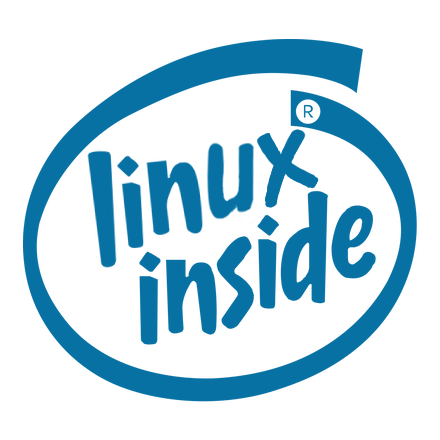I know Debian and others can breathe life into older machines. But i wonder if there are any distros with serious optimizations that I haven’t heard of. I’ve already tried MX Linux on an old Thinkpad SL400, and didn’t see any difference from plain Debian.
Update: thanks for the great suggestions. Forgot to say many distros feel zippy and fast until you open a web browser. Appreciate your thoughts on which web browser to use too. So far I’ve had a positive experience with Thorium and Chromium.
The problem with older machines is the web browsing, not the system itself. You could use a browser with Java script disabled but a lot of websites will refuse to work.
You have to sacrifice with browser functionality to improve performance.
Yep. All this optimization you see here about “minimal installs” and which DE to choose is completely moot, if opening Firefox takes up more RAM than the entire operating system.
Even 4gb are really low these days, if you actually want to do something in the browser.
I’ve had good experiences with Midori and Dillo as alternative browsers on low-memory machines. Obviously features will take a hit but they’re surprisingly functional. Don’t expect to be able to open many tabs but you can do the usual things including YouTube etc.
Puppy Linux is what I shove on old Atom netbooks
Can I run regular browsers on Puppy? Or have to use their own apps only?
I’m afraid I can’t answer that, It’s been quite a while. I think qutebrowser is the one that ships with it?
Subject lines on their forum suggest Firefox and Chromium are both possible.
Try: https://github.com/marmolak/gray386linux <– It was designed for really old hardwares.
I’ve already tried MX Linux on an old Thinkpad SL400, and didn’t see any difference from plain Debian.
Because it’s the stock Debian + custom themes/skins + some crappy useless minitools. The 99% of packages come from the official Debian repository, the rest are only the rice.
If you have newer machine than a real 386:
Alpine is very lightweight. I think it was built so that it would run well inside docker containers, which means it should be fairly easy for low-end computers to run it.
Afaik, it doesn’t come with a DE out of the box, so it won’t be very user-friendly
It has a script called
setup-xorg-basethat will install the basic graphical support, and you can add a specific DE on top. For example.Oh ok, cool!
I guess it depends on what comes with the distro. If you start off with a basic Linux install and add a DE that is low on system resources, like LXQt, you can breathe life into a machine.
Bodhi, antiX and Linux Lite come to mind.
You can also start with a minimal base, Arch, Debian, Alpine, anything, and then add packages.
AntiX/MX Linux, I’ve had great success getting them to boot on systems that were refusing to boot anything else, AntiX is my go-to distro for bringing new life to old hardware, it works with literally anything you throw at it.
c2d era laptop. first step if you haven’t yet, swap the hdd for a low-cost sata ssd if you can. if you have some homeless sodimms, up the ram, too, if it won’t cost anything to do it.
if you’re going with mx, you want the fluxbox spin; or opt for antix with icewm instead.
otherwise start with a debian base install (no de or extra sw at install), then add only what you need. peppermint is another option–a basic debian with xfce out-of-the-box and little else. it’s what i’ve been using lately on similar hardware.
for something ‘different’, you could look at slax.
Thanks. I’ve already added an ssd drive and upgraded tge ram from 3 to 4gb. Another comment mentioned Icewm so I’m definitely giving it a try.
antiX should be ok, it’s very light
Love Antix! It is like the grandfather to MX Linux, but also the little baby?
Wow they even offer the Trinity DE :) thanks
In earlier Q4OS versions Trinity was the only desktop environment. I still run it even though there’s plenty of power on hand to run the others. It just works.
I always have a sweet spot for KDE 3.5. I remember how responsive and tast it was on my Pentium PC some 15 years ago.
Q4OS will release an updated version within a few weeks, so if you’re interested, keep an eye on the home page’s “Latest News”.
(The developers are quite active in the forum, too.)
If you want serious optimizations - then Gentoo is your choice. But seriously, there won’t be any serious difference between distributions. What really matters here are DEs and browsers. I would recommend some kind of lightweight window manager like i3 or dwm. If you do not want to configure everything yourself, then your choice is lxde/lxqt. Also, you can use distros without systemd (void, artix, devuan, gentoo etc), but that does not matter that much.
Another alternative to not configuring is using someone else’s rice
Peppermint OS!
I was really excited about peppermint so I switched my old laptop from Kubuntu. but peppermint feels more sluggish than KDE and now I’m not sure what I did wrong :(
As in responding slowly? I’m aware Peppermint is not meant for aesthetics, but it should be responsive.
Just install Arch without a desktop environment.
It’s kinda surprising how much you can do in just a tty, the only thing I can’t think of a method for rn is viewing/editing documents.
I can’t think of a method for rn is viewing/editing documents
What is the extension of document? I bet you money it’s possible in terminal. PDF? docx?
I mean any kind of document, so yes, PDF, docx, rtf, etc.
Thinking about it, isn’t lesspipe able to view documents?
Literally all the extensions you mentioned can be viewed and edited in terminal by various tools.
I don’t know the tools, but that means you can probably do everything* in a tty without ever installing a graphical environment
*I almost forgot spreadsheets and presentations
Do you actually want to know the tools for each of the extensions you mentioned or just having a conversation here?
So Slackware? If you can cross-compile then maybe gentoo. I’m not sure if Raspberry Pi Desktop is x86.
I’m pretty sure you can have a minimal slack and choose xfce in the installer.
Slackware isn’t easy on resources. It needs more space than most and defaults to KDE.
Raspberry Pi Desktop does have an x86 version.
Bunsen Labs Linux and, for the experience, Tiny Core Linux
Bodhi! Another I’ve found to be lean is Zorin Lite
*buntu can’t be counted as lightweight.











